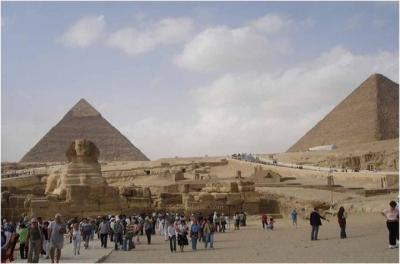Information / History & Culture
Cairo History And Culture
The largest city in Africa and the capital of Egypt, Cairo is a city that holds a significant place in the world. Even though it’s an urbanized city, it has a rich historical background. The Cairo history can be divided into different phases, each of these phases contributed to making the city what it is today.
Phase 1: Early History
The ancient settlements in Memphis serve as the root of Cairo history. This city was established in the 10th century as Fustat by the Fatimids. In the 4th century, the Romans built a fortress town and called it Babylon. This town was very significant for the Romans and the Byzantine city. In the early 7th century, Amr ibn As, a conqueror, settled near the town and the permanent settlement began to be known as al-Fustat, meaning, the city of Tents. Soon this city became the capital of Islamic Egypt. The Abbasids, after overthrowing the Ummayad caliphate, established a new settlement close to Fustat which was titled as, “al-Askar”, which meant the city of sections. Ahmad ibn Tulun started a rebellion in the 9th century due to this al-Askar was abandoned and al-Qatta'I was established which served as the seat of government. In the 10th century after Abbasids reasserted their control over Egypt, destroying al-Qatta’i.
Phase 2: Establishment and Foundation
In 968, the Fatimids entered the country under the command of Jawhar al-Siqilli and made a new city that was known as al-Man??riyyah, and this city was made the capital of the Fatimid Dynasty. It was during this period, the Al-Azhar mosque was built. The city’s name was then changed to al-Q?hiratu by the Fatimid caliph, al-Mu'izz li-Din Allah. Cairo was established and when in 1168, the city of al-Fustat was set on fire to save Cairo from being captured by the Crusaders, the Fatimids established Cairo as the permanent capital. Cairo was then expanded and enclosed the ruins of al-Fustat and the cities al-Qatta’I and al-Askar. In the year 1169, Salahdin established himself as the Sultan by taking away the power and control from al-'??id, the last Fatimid caliph, beginning the Ayyubid Dynasty. Cairo Citadel was established during his reign and till the middle of the 19th century, this construction served as the government seat.
Phase 3: The Dynasty of the Mamluks
The 13th century marked the beginning of a new dynasty that was led by the slave soldiers, known as Mamluks. Cairo served as the capital of this Dynasty as well. The Fatimid buildings were sold and newer buildings were made with a newer infrastructure. By the mid-14th century, the population of Cairo reached half a million. During this period, the spice trade flourished.
Phase 4: Bubonic Plague
In the year 1347, something terrible entered the country and spread in Cairo. It was the spreading of Black Death or the Bubonic Plague that killed 20,000 people in Cairo every day. It was one of the darkest eras for not only Cairo but for all the areas it hit.
Phase 5: The City under Ottoman Rule
Cairo under the Ottoman rule lost its importance, as it was hit by Black Death reducing the population of the city. Also, the spice trading became insignificant as an alternate route was found by Vasco Da Gama. Egypt was given provincial status rather than a country during this time, therefore, the importance of Cairo reduced further. French occupied Egypt but soon, the Ottoman Empire and British regained the control of the country. After the British left Egypt, the Mamluks, Ottomans, and Albanians fought for power. Muhammad Ali Pasha, an Albanian was appointed as a commander and soon he was declared the viceroy of Egypt in the early 19th century.
Phase 6: The Expansion and Modernization
Muhammad Ali Pasha soon began to be referred to as the founder of Modern Egypt. He passed away in the year 1848 and his grandson, Isma’il Pasha continued the work of development that his grandfather was doing. During his reign, the constructions were mostly inspired by Paris. For this development work, Egypt was indebted and this is when European control grew over the city and in 1882, the British invasion took place. In 1922, Egypt declared its independence and Cairo was established as the capital of the country.
Phase 5: Egyptian Revolution
In 2011, protests begin against the president, Hosni Mubarak. This protest ended in June 2013, when the president resigned. It was a major event in the history of Cairo as Cairo was one of the most significant cities that participated in the protest.
The Cairo Culture
Cairo is a city with a rich historical background and this does not come as a surprise that it has a rich culture as well. Cairo Culture is influenced by Ottomans, Fatimids, Albanians and Europe. The construction here is mostly inspired by Europe. It is a city that has a pure culture that attracts numerous tourists from all around the world.
Featured Tours In Cairo

Cairo Airport Private Arrival Transfer
$19.2 ^
per person

Cairo Airport Private Departure Transfer
$19.2 ^
per person

Private Transfer between Cairo and Alexandria
$68.4 ^
per person

Private Tour: Pyramids of Giza Memphis and Sakkara with Lunch
$36 ^
per person

Dinner Nile Cruise in Cairo
$15 ^
per person

